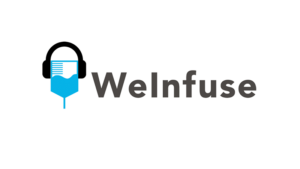The recipe for making a great nurse has always been knowledge combined with continued experience and a desire to never stop learning. For the modern infusion nurse, the ingredients for this recipe calls for a triple portion of knowledge and a heavy measure of flexibility. Infusion nursing has become a very specialized field in the past decade as infusion patients and their new treatments are now more complex than ever before. In the past, infusion nurses found themselves in the field of infusion nursing mainly because they developed skill in placing an IV line. Today, the modern infusion nurse must be a skilled, knowledgeable nurse who has gained that skill and knowledge through continuing education, persistence in skill development and technology know how.
In the ever-changing world of injectable biologics, IVIG, and other specialty medications, the modern infusion nurse must take ownership of their continuing education. It is no longer good enough to simply attend a yearly conference and take a few CE’s classes required for license renewal. The medication pipeline is full of new biologics and other specialty infusion drugs that are rapidly coming into the market. An infusion nurse must be vigilant in his or her education quest to stay up to date on medication guidelines including dosage and administration, medication preparation, adverse reactions, contraindications, and warnings and precautions for these new products, or risk falling behind their peers.
2 MUST READ Resources for Modern Infusion Nurses:
The Manufacturer’s Prescribing Insert (PI)
Many new products have strict pre-treatment protocols that must be followed to prevent or reduce the possibility of adverse reactions. All medication knowledge should start with reading the PI or Prescribing Information / Package Insert that comes boxed with every injectable medication. Yes, it is a long and sometimes boring read, but a necessity to completely understand and comprehend the medication you are preparing to put into another human beings body. The prescribing insert is the drug company’s complete FDA approved information resource about the medication including clinical outcome studies on each diagnosis, preparation and administration instructions, and adverse events. The modern infusion nurse should be an active reader of these guidelines and always refer to them when questions about the medication arise.
Infusion Nurses Society (INS)
Maintaining consistency and standardization of practice among infusion nurses is a sure-fire way to improve the patient care and safety of infusion nursing. The Infusion Nurses Society (INS) has long been recognized as the premier organization for the specialty of infusion nursing. Maintaining patient safety and delivering safe care is of utmost importance to INS. An infusion nurse today can feel safe and properly informed when applying the Infusion Therapy Standards of Practice and the Policies & Procedures for Infusion Nursing in their daily tasks. Knowledge and excellence learned from this great foundation organization will provide the modern infusion nurse with confidence in practicing and advancing this rewarding career path.
What Does a Modern Infusion Nurse Look Like?
The Modern Infusion Nurse must be a Teacher and Trusted Advisor
If being a good teacher is a cornerstone of good nursing, then the modern infusion nurse must be a professor. Many of these new medications are complex both in their science and administration. Many patients won’t get the education they need from their busy prescribing providers office. That leaves the modern infusion nurse as the last line education resource for the patient just before they receive their first treatment. Our patients need to understand the medication they are receiving and have their expectations properly set for the duration of their treatment. The modern infusion nurse’s ability to properly educate the patient will contribute greatly to the success of the patient’s treatment journey and healing process. The best teachers understand their students so the modern infusion nurse must understand their patient’s disease process and treatment regimen completely.
The teaching does not start at the patient encounter, it typically happens between the nurse and prescribing provider long before. Helping the prescribing provider decide the best medication options for their patients is another critical role the modern infusion nurse must be prepared for. Many providers will lean on the experience and knowledge of their infusion nurses when deciding the best medication choice for their patients. Smart providers know that the infusion nurse’s hands-on experience with different patients and their injectable medications is valuable for information about which medications work best for each unique patient situations. As medications and access devices change and improve, the modern infusion nurse will continue to be a trusted advisor for helping the patient the find the best options for their infusion treatment.
Infusion Nurses must be Medication Mix Masters
Most infusion nurses working within in-office or stand-alone Infusion Centers will be required to personally mix or prepare patient medications just prior to administration. The modern infusion nurse must take complete responsibility of learning how to properly and safely prepare any medication they are asked to administer. Some facilities will use pre-printed medication guides to assist the nurse in the preparation process, however, reliance on these “cheat sheets” can lead to complacency and gaps that can compromise the efficacy and safety of the prepped medication. The modern infusion nurse must ultimately understand and follow preparation protocols outlined in the prescribing information (PI) of each medication they prepare. The infusion nurse should stay up to date with current INS protocols for aseptic technique and proper preparation processes to prevent any possible contamination of the prepared medication. The infusion nurse is typically the very last person to touch the prepped medication prior to administration. The modern infusion nurse must be the patient’s final line of defense and advocate for any possible problems associated with the medication dose, storage, and preparation.
The Modern Infusion Nurse Must be Ready for Adverse Events
In many cases, the infusion nurse is working in non-acute environments as a solo or team member of a small group of 2-3 other infusion nurses, or medical/nursing assistants or techs. Often the infusion nurse is the only practitioner available to help a patient when things don’t go as planned. Successful management of an adverse drug reaction requires both early detection and prompt support. As the infusion environment changes from hospital to outpatient setting, the modern infusion nurse must be comfortable in the treatment of the patient in all adverse and serious adverse events. Preparation in the form of continuing education will make the modern infusion nurse comfortable in each possible situation. The modern infusion nurse needs to have advanced knowledge of possible adverse reactions associated with the medications they are administering. As mentioned previously, much of this information is documented in the prescribing insert (PI) that comes boxed with each medication. When it comes to knowledge of adverse events, the modern infusion nurse would always rather read it than regret it
The Modern Infusion Nurse must Embrace and Master Technology
It is no longer acceptable for any practicing clinician to shy away from electronic documentation. It is currently 2017 and, like it or not, technology rules the day. Nurses who do not embrace and learn the technology of the day will go the way of the dinosaur. The modern infusion nurse must be a master of electronic medical record documentation. Paper documentation is no longer acceptable as a standard for documentation of complex infusion and injectable specialty medications. A good nurse should always use their intuition – however, relying on memory to keep an encyclopedia of biologic and specialty medication information is foolish and will only lead to bad choices that can hurt both the patient, your Infusion Center’s bottom line, and ultimately blot your record of being a great modern infusion nurse. A good electronic system should support the provider, nurse, and patient as a tool to improve the overall efficiency and clinical outcomes for everyone. Great documentation systems are consistent and easy to use, help to maintain chronological events, make documentation legible and easy to understand and help infusion nurses remember what is important for essential documentation. Modern infusion nurses should embrace and learn to use the technological tools around them and put competence above convenience when it comes to the are they are providing their patients.
The modern infusion nurse is continually seeking information and increasing their knowledge in the practice of infusion nursing. Are you the modern infusion nurse you want to be? Modern infusion nurses should always be looking to advance and move infusion nursing forward – the result will be better and safer care for our patients and improved outcomes for our practices and Infusion Centers for years to come.
Want to see how an Infusion Center software built specifically for your practice or stand-alone Infusion Center can help modernize your infusion nursing and facility?
Click here to schedule a WeInfuse demo and learn more.




